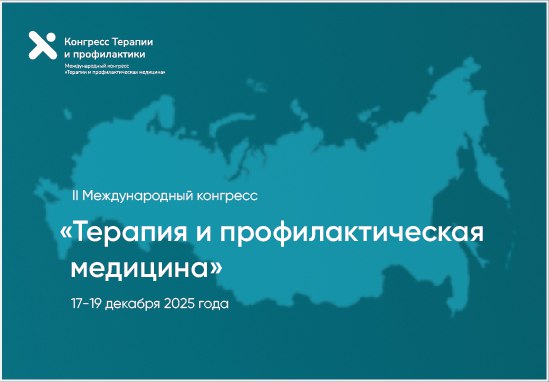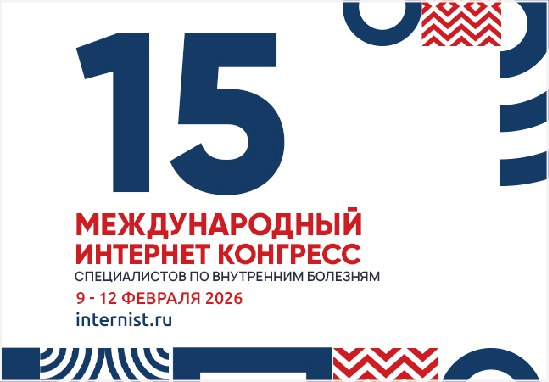Немедикаментозное снижение гиперхолестеринемии растительными станолами при потреблении обогащенных ими пищевых продуктов
Аннотация
Фитостеролы и фитостанолы – растительные аналоги холестерина (ХС), обладающие способностью конкурентно ингибировать абсорбцию ХС эндотелиальными клетками кишечника и, вследствие этого, снижать уровень ХС в плазме крови. Сами стеролы, и в большей степени станолы, абсорбируются в кишечнике в значительно меньшей степени, чем ХС, и имеют значительно меньшую концентрацию в плазме крови, чем ХС. Известно, что редкие случаи гиперхолестеринеми, например, генетически обусловленная гиперситостеролемия, связаны с повышенным риском ишемической болезни сердца. Этой опасности лишены станолы. Создание хорошо растворимых в липидной среде эфиров станолов помогло использовать их для насыщения таких пищевых продуктов, как спреды, йогурт, кефир, молоко и др. (общее торговое название Benecol, Финская компания Raisio), потребление которых в физиологических количествах обеспечивает потребление эфиров станолов в дозах 1,5-2,0 г/сут. Потребление станолов в таких количествах приводит к снижению уровня ХС и ХС липопротеидов низкой плотности на 10-15% дополнительно к эффектам, достигнутым на гиполипидемической диете, и может быть использовано для профилактики и лечения атерогенной гиперхолестеринемии.
Ключевые слова
Об авторе
Н. В. ПероваРоссия
Список литературы
1. Peterson DW. Effect of soybean in the diet on plasma and liver cholesterol in chickens. Proc Soc Exp Biol Med 1951; 78: 143-7.
2. Sugano MF, Kamo I, Ikeda I, et al. Lipid - lowering aktivity of fitostanols in rats. Atherosclerosis 1976; 24: 301-9.
3. Lees AM, Mok HY, Lees RS, et al. Plant sterols as cholesterol-lowering agents: clinical trials in patients with hypercholesterolemia and studies of sterol balance. Atherosclerosis 1977; 28: 325-8.
4. Grundy SM, Mok HY. Effect of low dose phytosterols on cholesterol absorption in man. Greten H eds. Lipoprotein Metabolism 1976; 112-118 Springer-Verlag Berlin, Germany.
5. Weihrauch JL, Gardner JM. Sterol content of foods of plant origin. J Am Diet Assoc 1978; 73: 39-47.
6. Czubayko F, Beumers B, Lammsfuss S, et al. A simplified micromethod for quantification of fecal excretion of neutral and acidic sterols for outpatient studies in humans. J Lipid Res 1991; 32: 1861-7.
7. US National Cholesterol Education Program. TLC diet. JAMA 2001; 285: 2486-97.
8. Kritchevsky D. Phytosterols. Kritchevsky D, Bonfield C eds. Dietary Fiber in Health and Disease 1997; 235-43. Plenum Press New York, NY.
9. Glueck CJ, Speirs J, Tracy T, et al. Relationships of serum plant sterols (phytosterols) and cholesterol in 595 hypercholesterolemic subjects, andfamilial aggregation of phytosterols, cholesterol, and premature coronary heart disease in hyperphytosterolemic probands and their first-degree relatives. Metabolism 1991; 40: 842-8.
10. Westrate JA, Meijer GW. Plant sterol-enriched margarines and reduction of plasma total and LDL-cholesterol concentrations in normocholesterolemic and mildly hypercholesterolaemic subjects. Eur J Clin Nutr 1998; 52: 334-43.
11. Salen G, Shefer S, Nguyen L, et al. Sitosterolemia. J Lipid Res 1992; 33: 949-55.
12. Sudhop T, Gottwald BM, von Bergmann K. Serum plant sterols as a potential risk factor for coronary heart disease. Metabolism 2002; 51(12): 1519-21.
13. Rajaratman RA, Gylling H, Miettinen TA. Independent association of serum squalene and noncholesterol sterols with coronary artery disease in postmenopausal women. JACC 2000; 35(5): 1185-91.
14. Patel MD, Thompson PD. Phytosterols and vascular disease. Atherosclerosis 2006; 186(1): 12-9.
15. Heinemann T, Kullak-Ublick GA, Pietruck B, et al. Mechanisms of action of plant sterols in inhibition of cholesterol absorption. Comparison of sitosterol and sitostanol. Eur J Clin Pharmacol 1991; 40(Suppl. 1): 361-9.
16. Gylling H, Puska P, Vartianen E, Miettinen TA. Serum sterol during stanol ester feeding in mildly hypercholesterolemic population. J Lipid Res 1999; 40: 593-600.
17. Plat J, Mensink RP. Plant Stanol and sterol esters in the control of blood cholesterol levels: mechanism and safety aspects. Am J Cardiol 2005; 96: 15-22.
18. Plat J, Mensink RP. Increased intestinal ABCA1 expression contributes to the decrease in cholesterol absorption after plant stanol consumption. FASEB J 2002; 16: 1248-53.
19. Law MR, Wald NJ, Thompson SG. By how much and how quickly does reduction in serum cholesterol concentration lower risk of ischaemic heart disease? BMJ 1994; 308: 367-72.
20. Heinemann T, Leiss O von Bergmann K. Effect of low-dose sitostanol on serum cholesterol in patients with hypercholesterolemia. Atherosclerosis 1986; 61: 219-23.
21. Vanhanen HT, Blomquist S, Ehnholm C, et al. Serum cholesterol, cholesterol ptecursors and plant sterols in hypercholesterolemic subjects with different apo E phenotypes during dietary sitostanol treatment. J Lipid Res 1993; 34: 1535-44.
22. Vanhanen HT, Hajander J, Lehtovirta H, Miettinen TA. Serum levels, absorbteon efficiecy, faecal elimination and synthesis of cholesterol during increasing doses of dietary sitostanol esters in chypercholesterolaemic subjects. Clin Sci (Lond.) 1994; 87: 61-7.
23. Miettinen TA, Puska P, Gylling H, et al. Reduction of serum cholesterol with sitostanol-ester margarine in a mildy hypercholesterinemic population. N Engl J Med 1995; 333: 1308-12.
24. O Neil FH, Clefton P, Mandeno R, et al. Comparison of the effects of dietary plant sterol and stanol esters on lipid metabolism. Nutr Metab Cardiovasc Dis 2004; 14: 1133-42.
25. Hallikainen MA, Uusitupa MI. Effects of 2 low-fat stanol estercontaining margarines on serum cholesterol concentrations as part of low-fat diet in hypercholesterolaemic subjects. Am J Clin Nutr 1999; 69: 103-10.
26. Becker M, Staab D, von Bergmann K. Treatment of severe familial hypercholesterolemia in children with sitosterol and sitostanol. J Pediatr 1993; 122: 292-6.
Рецензия
Для цитирования:
Перова Н.В. Немедикаментозное снижение гиперхолестеринемии растительными станолами при потреблении обогащенных ими пищевых продуктов. Кардиоваскулярная терапия и профилактика. 2006;5(5):64-69.
For citation:
Perova N.V. Non-pharmaceutical hypercholesterolemia management by plant stanol-enriched product consumption. Cardiovascular Therapy and Prevention. 2006;5(5):64-69. (In Russ.)
























































